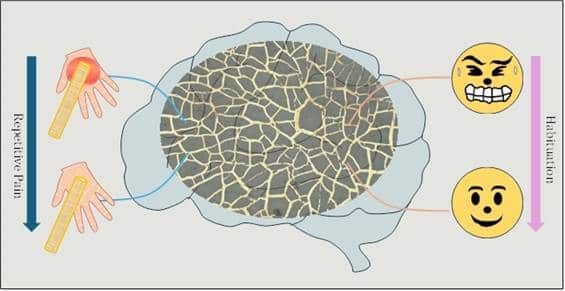Innovative Device Mimics Human Pain Perception

In a groundbreaking development, scientists have created a stretchable device that can sense strain and mimic human pain perception. This innovative technology, developed by researchers at the Jawaharlal Nehru Centre for Advanced Scientific Research (JNCASR) in Bengaluru, uses a network of silver wires embedded in flexible materials. The device not only detects strain but also adapts its electrical response over time, much like how the human body learns to cope with pain. This advancement opens new avenues for smart wearable systems that could significantly enhance healthcare and robotics.
The Need for Adaptive Technology
In today’s fast-paced world, technology that can respond to human-like sensations is becoming increasingly important. Various fields, including healthcare and robotics, require materials that can sense stress or pain. Such technology can enhance safety, improve human-machine interactions, and make wearable devices smarter. For instance, in healthcare, a device that can detect stress levels in real-time could provide valuable insights to doctors, allowing for timely interventions. Similarly, in robotics, machines that can “feel” their environment could operate more safely alongside humans.
The concept of creating devices that mimic human sensory responses is not new. Researchers have long been inspired by the human body’s ability to sense and react to pain. In our bodies, nociceptors are specialized sensors that detect harmful stimuli and trigger appropriate responses. Over time, with repeated exposure to pain, individuals may experience a reduced sensitivity to it, a phenomenon known as habituation. This natural adaptation process has inspired scientists to develop technologies that can replicate similar responses.
How the Device Works
The innovative device developed by JNCASR scientists employs a network of tiny silver wires embedded in a stretchable material. When the material is stretched, small gaps form within the silver network, temporarily interrupting the electrical pathway. An electric pulse can then prompt the silver to fill these gaps, effectively reconnecting the network. This process allows the device to “remember” the stretching event. Each time it is stretched and reconnected, the device gradually adjusts its response, mimicking the human body’s adaptation to repeated pain.
This dynamic process is crucial for the device’s functionality. It enables the technology to learn from its interactions with the environment, much like how humans learn to cope with pain over time. The ability to adapt and respond intelligently to stimuli sets this device apart from traditional sensors. It combines sensing and adaptive response in a single, flexible unit, offering a streamlined and efficient way for technology to interact with its surroundings.
Future Implications and Applications
The research findings, published in the journal Materials Horizons by the Royal Society of Chemistry, hold significant promise for the future of health monitoring systems. Devices that can “feel” stress like the human body and adapt in real-time could revolutionize how healthcare providers monitor patients. Such technology could provide immediate feedback to doctors or users, allowing for proactive management of stress-related conditions.
Moreover, this adaptive technology could enhance robotic systems, making them safer and more intuitive to work with. Robots equipped with the ability to sense strain and respond accordingly could operate more effectively in environments shared with humans. This could lead to improved collaboration between humans and machines, ultimately enhancing productivity and safety in various industries.
Observer Voice is the one stop site for National, International news, Sports, Editor’s Choice, Art/culture contents, Quotes and much more. We also cover historical contents. Historical contents includes World History, Indian History, and what happened today. The website also covers Entertainment across the India and World.
Follow Us on Twitter, Instagram, Facebook, & LinkedIn

